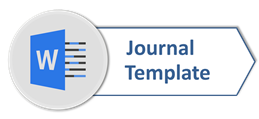Reduplication in the Pendalungan Language: A Comparative Study
Abstract
The purpose of this research is to describe the similarities and differences of Pendalungan`s reduplication in the Kemuningsari Kidul, Jenggawah, Jember, and East Java in terms of form, function, and meaning. The method used in this study is a comparative descriptive method whose purpose is to describe the comparison of reduplication elements of the Pendalungan language, which includes Javanese and Madurese in the Horseshoe area. The reduplication theory used relies on Simatupang's theory (1983), which divides it into five categories, namely: dwilingga, dwilingga salin suara, dwipurwa, dwiwasana, and trilingga. The object of this research is a word containing reduplication spoken by the Javanese and Madurese of the Pendalungan ethnic group. Data was collected using simak libat cakap, in which the researcher was directly involved in conversations with informants (Mahsun, 2005). The results of data analysis show that both languages consist of four forms of reduplication, namely: dwilingga, dwilingga salin suara, dwipurwa, and dwiwasana, which function as nouns, adjectives, and verbs. As well as containing plural meanings and behaviors that are carried out repeatedly. Furthermore, the patterns of Javanese and Madurese in the form of dwiwasana are different. In Javanese, the repetition of the last syllable is still placed at the end by adding a consonant /k/, such as ndelo-lok "glare". Whereas in the Madurese language, the last syllable is placed in the front position, such as juk-tojuk "sit down".
Keywords: Pendalungan, Reduplication, Morphology, Jember
Full Text:
PDFReferences
Alwasilah, C.1985. Linguistik Suatu Pengantar. Bandung: Angkasa.
Andjadi CH, dkk. 2022. Analisis Reduplikasi Morfemis Bahasa Jawa Dialek Surabaya. Jurnal Talenta, 5(2), 79-85.
Chaer, A. 2014. Linguistik Umum Edisi Revisi. Jakarta: Rineka Cipta
D. Firman. A. 2014. Bentuk dan Makna Reduplikasi Bahasa Moronene. Jurnal Kandai, 10(1), 1-15.
Kalamper, dkk. 1989. Morfologi Bahasa Tamuan. Jakarta: Departemen Pendidikan dan Kebudayaan.
Khasanah, N.S, dan Baehaqie, I. 2020. Penanda Makna Jamak Bahasa Indonesia dan Bahasa Arab Pada Aspek Morfologis (Analisis Kontrastif). Jurnal Sastra Indonesia, 9 (3), 172-179
Mahsun. 2005. Metode Penelitian Bahasa: Tahapan, Strategi, Metode dan Tekniknya. Jakarta: Raja Grasindo.
Parker & Riley. 2014. Linguistics for Non-Linguists: A Primer with Exercises 5th Edition. Jurong: Pearson.
P. Gilang. 2021. 10 Bahasa from https://www.gramedia.com/literasi/bahasa-paling-populer-di-indonesia/.Paling Populer di Indonesia dan Paling Banyak Digunakan. Retrieved March 10 2023
Prasetyo, H. A. 2019. Javanese reduplication: A study on Pangkur Jenggleng TV Program. International Journal of Humanities Studies, 2(2), 179-185.
Ramlan. 2017. Morfologi Suatu Tinjauan Deskriptif. Yogyakarta: C.V. Karyono
Simatupang, M.D.S. 1983. Reduplikasi Morfemis Bahasa Indonesia. Jakarta: Djambatan.
Subroto, E.D. 1992. Pengantar Metoda Penelitian Linguistik Struktural. Surakarta: Sebelas Maret Uniersity Press.
Suhartatik & Fauzi, M. 2019. Variasi bentuk leksikal bahasa Madura Ranah nelayan di Kabupaten Sumenep. Jurnal Estetitka, Program Studi Pendidikan Bahasa dan Sastra Indonesia, 1(1), 1-9.
Sutarto, A. 2006. Sekilas Tentang Masyarakat Pandalungan. Makalah, Pembekalan Jelajah Budaya, Yogyakarta: Balai Kajian Sejarah dan Nilai Tradisional Yogyakarta, 7-10 Agustus.
DOI: https://doi.org/10.33365/ts.v21i2.2857
Refbacks
- There are currently no refbacks.
Copyright (c) 2023 SITI FITRIAH

This work is licensed under a Creative Commons Attribution-ShareAlike 4.0 International License.
Teknosastik: Jurnal Bahasa dan Sastra
Publisher: Universitas Teknokrat Indonesia
Address: Zainal Abidin Pagaralam Street 9-11, Bandar Lampung, Indonesia
Website: https://ejurnal.teknokrat.ac.id/index.php/teknosastik/index

Creative Commons Attribution-ShareAlike 4.0 International License






